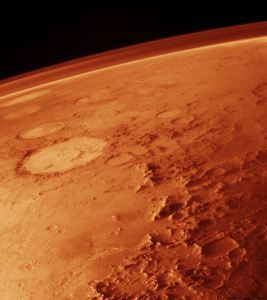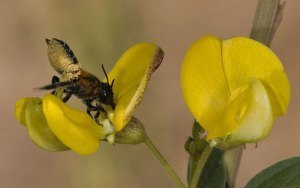Kate Rauner's Blog, page 98
May 11, 2014
Money is Icky
 Past studies have been confirmed, and it’s worse than we thought. Physical money carries thousands of different kinds of germs. “Easily the most abundant species
Past studies have been confirmed, and it’s worse than we thought. Physical money carries thousands of different kinds of germs. “Easily the most abundant species they found is one that causes acne. Others were linked to gastric ulcers, pneumonia, food poisoning and staph infections, the scientists said. Some carried genes responsible for antibiotic resistance. ‘It was quite amazing to us… We actually found that microbes grow on money’… Using a DNA technique, researchers found bacteria, viruses, fungi and plant pathogens… DNA from horses and dogs—even a snippet or two of white rhino DNA.” http://on.wsj.com/1jpxzTV
they found is one that causes acne. Others were linked to gastric ulcers, pneumonia, food poisoning and staph infections, the scientists said. Some carried genes responsible for antibiotic resistance. ‘It was quite amazing to us… We actually found that microbes grow on money’… Using a DNA technique, researchers found bacteria, viruses, fungi and plant pathogens… DNA from horses and dogs—even a snippet or two of white rhino DNA.” http://on.wsj.com/1jpxzTV

A dollar from 1862 – think of how much has grown on this bill. Wikipedia public domain
A move to polymer films reduces microbe growth initially, but since the oils from our fingers feeds the germs every time we touch a bill, I suppose plastic money will end up just as bad. Gold, like many metals, has an antibiotic effect (at least, on bacteria), so perhaps the “gold standard” people are cheering. But maybe this is just another reason to use your cell phone to buy things.
The research was performed at NYU’s Center for Genomics and Systems Biology and has not yet been published in a scientific journal, so while the findings are too cool to pass up, accuracy-wise we better keep our fingers crossed. Thanks to http://www.clker.com/ for the germ clip-art.








May 7, 2014
Haiku on Mars – a poem by Kate Rauner
May 3, 2014
Evidence-Based Medicine Needs All Trials Published
I have an analytical nature and appreciate evidence-based decisions, especially when it comes to health, wellness, and medicine. Modern medicine has made amazing strides forward, but human beings are so hard to study in the wild that, in many ways, medicine remains an art as well as a science.

Jabir ibn Hayyan (aka Geber), considered the “father of chemistry” in the late 8th century, introduced a scientific and experimental approach to alchemy. Wikipedia (public domain in US)
Science needs information to progress and when information is withheld, suppressed, or ignored because it is disappointing, progress slows. When medical trials are not published, the lost information can set us back, and in medicine that can hurt people in an immediate way. That’s why I’ve been watching http://www.alltrials.net/, a European effort to require all human trials to be published, even if the results make the sponsors unhappy. Their web page says:
“It’s time all clinical trial results are reported.
Patients, researchers, pharmacists, doctors and regulators everywhere will benefit from publication of clinical trial results…
Thousands of clinical trials have not reported their results; some have not even been registered.
Information on what was done and what was found in these trials could be lost forever to doctors and researchers, leading to bad treatment decisions, missed opportunities for good medicine, and trials being repeated….
Europe voted for clinical trial transparency 2nd April 2014. It’s soon going to be the law in Europe that drug clinical trials are publicly registered and results reported.”
Especially when government funds are involved, I think this should be a requirement; but faithfulness to science should lead all trials to be published. I hope this idea will spread.








April 30, 2014
Ice Age Found – a poem by Kate Rauner
La Bera Tar Pits are well known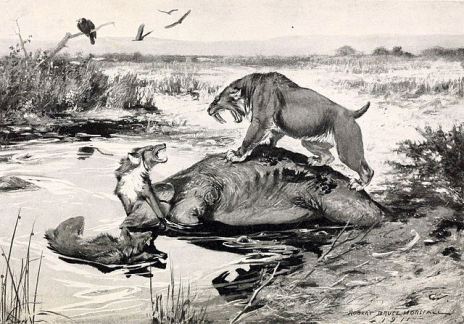
For ice-age monsters that called them home:
The mammoths, ground sloths, short-faced bears
And saber-toothed cats found there.
It’s from the smallest creatures that
We learn about the habitat.
Bacterias once unnamed,
From insects and from pollen grains.
Flies and termites, water fleas;
We draw a picture based on these
Of a forest moist and dim
That formed the home they all lived in.
Two rare pupa bees were found,
Trapped forever in the ground,
Did not emerge or fly or mate,
But others of their kind escaped.
And while the lions now are gone
Leafcutter bees continue on.
learn more:
http://www.livescience.com/44724-leafcutter-bee-fossils-la-brea.html
http://en.wikipedia.org/wiki/La_Brea_Tar_Pits#Flora_and_fauna








April 26, 2014
Familiar Deer Surprises Us
What could be more familiar than mule deer, an iconic species of North America? But scientists have recently learned something new: Mule deer engage in a great twice-yearly migration, the longest of any mammal in the Lower 48 States. “Each spring, an estimated 500 of the mule deer leave Wyoming’s Red Desert and follow the snowmelt north. After about 50 miles (80 kilometers), they merge with 4,000 to 5,000 mule deer that winter in the foothills of the Wind River Range. Then the whole group follows a narrow corridor about 100 miles (160 kilometers) north to northwestern Wyoming, to the Hoback Basin and high mountains near Hoback Junction, just south of the world-famous valley of Jackson Hole. There, the deer spend the summer, [and walk back south in the fall.]“

Mule deer buck in Wyoming – Wikipedia Creative Commons
The deer must overcome “obstacles include roads, rivers, and about a hundred fences that the deer had to jump over, wiggle under, or walk around. The most stressful obstacles for the deer appeared to be four reservoirs that they had to swim across… [and] would likely spread out farther south into the Red Desert in winter if they weren’t stopped by Interstate 80, which serves as a ‘total barrier.’” Apparently no one had noticed this migration because mule deer are ubiquitous; there are mulies everywhere all year round. Until scientists followed individuals with GPS-enabled radio collars, no one noticed this migration.
“An added benefit to recording the deer’s long migration was learning more about their vocalizations. ‘I never heard deer talk to each other before,’ [the researcher] says. ‘But with the remote video cameras, we observed that they are obviously communicating with each other.’” The familiar mulies seem to be more complex and probably smarter than we give them credit for.
Now that we understand the mulies better, their migration route can be protected and they can continue to prosper. What a delight to learn something profoundly important about the deer we thought we knew so well.
Read more at http://bit.ly/1poLoJP
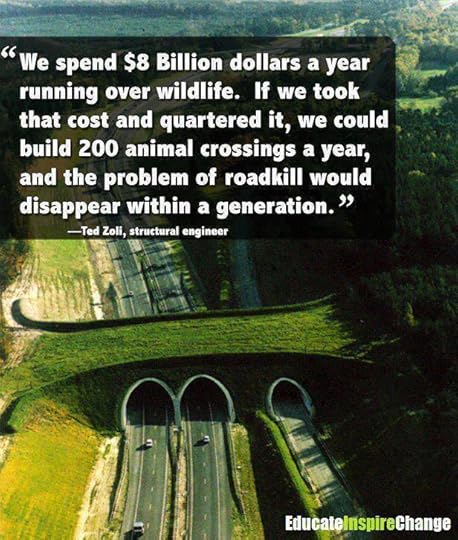
Visit Science is Awesome on Facebook








April 23, 2014
Dry and Fierce, April Winds – a poem by Kate Rauner
‘April showers bring May flowers,’
A British rhyme to cheer wet hours.
But in New Mexico’s southwest
We recite this poem in jest.
Through winter’s cold a little snow
Hardly seems the greatest foe.
March cajoles some early green
For hopeful deer now winter-lean.
But April shrivels in the wind,
Our hardest time begins in spring.
There’s still the heat of May to stand
And brutal June will parch the land
Before monsoon rains revive
The sturdy creatures that survive.
April here is no reprieve,
And gray oaks will drop their leaves,
Not for winter on my hill
But for spring and for April.
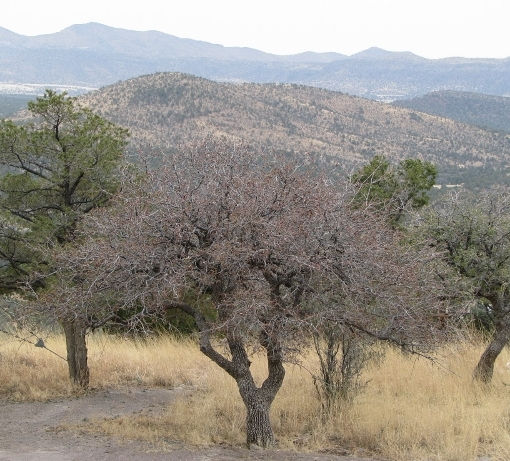
A gray Oak in my yard – the oak vary a great deal from tree to tree, dropping their leaves and setting buds to different extents in the spring. I suppose that provides a lot for nature to select from.








April 18, 2014
Authentic Happiness
You may know that psychology searches for treatments and cures for mental illness, but did you know they also seek ways to buttress us against illness and enhance daily life? I recently heard Dr Jennifer Coleman of WNMU explain positive psychology. This is scientifically-rigorous study, not “self-help” or “pop” psychology. I found it interesting that riches and a pleasant life do not lead to happiness in the long term. We humans are wired to serve others in our family, workplace, and community. Everyone has strengths and weaknesses, and using our strengths to overcome a challenge leads to happiness. Our greatest accomplishments come when we combine our interests and abilities with perseverance: this has lately been called “grit” and no one has yet found a way to teach it. That hardly surprised me: A person can work tirelessly at something that stirs their passion. Check out http://www.authentichappiness.org to learn about your strengths and much more.








April 14, 2014
Lunar Eclipse – a poem by Kate Rauner
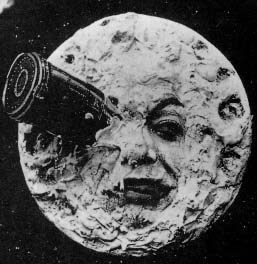
Early science fiction rocket arrives at the Moon in 1902 movie A Trip to the Moon
In anticipation of tonight’s lunar eclipse, I’m posting the week’s poem early – Kate
The world presents unto our eyes
Shapes and shadows, shifting lines
Our human brains do excel
At finding patterns that may tell
So in the moon the things we’ve seen:
A man, a rabbit, hands, a queen.
Just as clouds above cause rain,
All things above cause joy or pain.
When the moon turns rusty red
The normal night was turned to dread.
Will heaven’s fight drop on us soon,
As demons, jaguars bite the moon?
Drum and howl, chant and sing;
The moon’s restored, we always win.
Is it less now that we know
The moon is deep in Earth’s shadow?
Tonight I’ll see with my own eyes
A hint of nature’s scope and size.
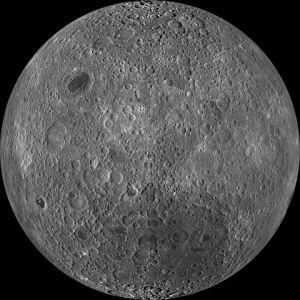
The far side of the moon, which we Earth-bound observers never see
There will be viewing parties in many places. I’ll watch from my own deck, but if you’re in Los Angeles, consider http://www.griffithobs.org/exhibits/special/Lunar_Eclipse_April_2014.html where an astronomer (in official eclipse-dispersing wizard’s robe and hat) and the public gather on the observatory’s front lawn with telescopes—and with noisemakers. Their public program from 7 pm to 2 am sounds great – too bad I’m too far away to attend.
Learn more about moon myths; for example: http://news.nationalgeographic.com/news/2014/04/140413-total-lunar-eclipse-myths-space-culture-science/?google_editors_picks=true. There are quite a few to choose from at http://en.wikipedia.org/wiki/Category:Moon_myths








April 12, 2014
Communicating Science
The new Cosmos series now playing in the US is not the only effort to communicate science to the public. Livescience.com recently reposted an article from the Australian site The Conversation on this topic. “No matter how strong the scientific argument and consensus among scientists there will always be people who reject the evidence. It happens on so many scientific topics, from climate change and vaccination to nuclear power and renewable energy… These are, of course, vastly different issues. Many of those who agree with one of the positions noted above will be horrified to find themselves included in the same sentence with another group.”

Neil deGrasse Tyson
Scientists tend to think that the way to resolve a disagreement is to get more facts, but when well-established science confronts hot-button, public-policy issues, this approach fails. To borrow a phrase from Stephen Jay Gould, the misunderstandings are “conceptual locks, not factual lacks.”
The Australians chose man-made climate change as their topic and approached the problem of communicating to the public from (what else?) a scientific perspective. They take climate experts on a series of public meetings to talk to and – most importantly – listen to ‘regular’ people. They suggest scientists must share their emotions and their passions – something scientists are trained to avoid in their professional papers. There is a short documentary available embedded in the article if you’d like to hear from the Australians in their own words.

Stephen Jay Gould
As others have noted, people usually base their opinions on their intuitive moral values and subsequently seek evidence to support those positions. People believe that some things are noble and pure, others are degrading and base; that some people have earned their loyalty while others are unknowns or opponents. These factors are more important than disembodied facts.
Science is not always intuitive, which is why it took civilization thousands of years to discover the scientific method. But our lives are better today because of science and it is well worth anyone’s effort to understand the science involved in public issues. The science does not dictate what policy should be followed; our morals and values play an important and proper role in decisions. But decisions based on falsehood will never work out right.








April 9, 2014
White Sand Dunes – a poem by Kate Rauner
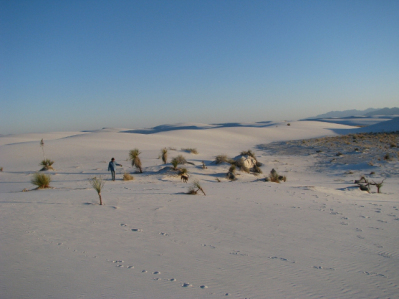
It starts as moonscape, black and white
Underneath the starlit night,
But what forms the craters here
Impacts from every footfall clear.
The eastern sky begins to glow,
Far mountains turn to pink and gold,
Then in a dozen breaths it’s gone,
And brilliant day replaces dawn.
The distance peaks are gray and dry,
A piercing blue now fills the sky,
The dunes so white it hurts to see,
Gypsum waves spread westerly.
Now everything is white and blue
Except the darkling beetle who,
Still black on white, defiant stands
A tiny rover on the sand.
Inspired by my recent trip to White Sands National Monument outside Alamogordo, New Mexico. The gate is closed from 8 pm to 8 am, so the only way to see the sunrise from the dunes is the camp overnight in one of only ten primitive, hike-in sites.
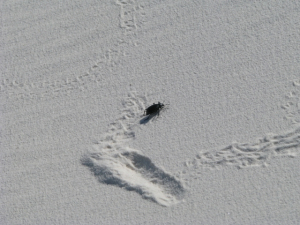
Darkling Beetle struggling on a dune slope










